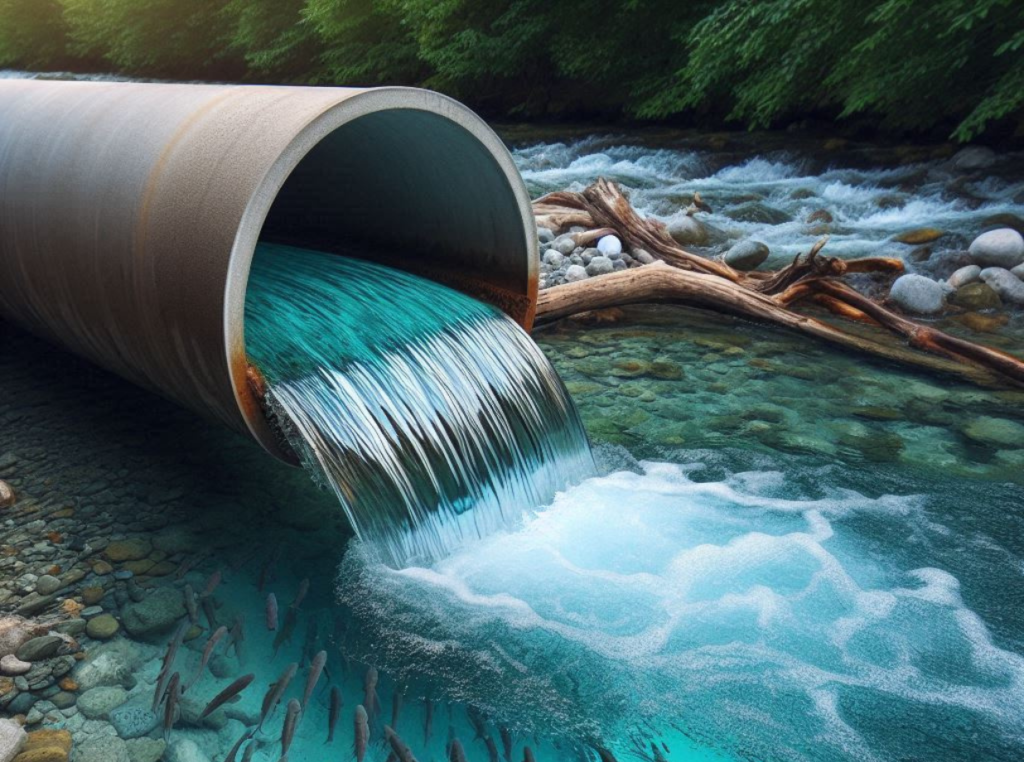Have you ever wondered how pollutants find their way into our rivers, lakes, and oceans? If you’ve stood by the waterfront and noticed murky or litter-strewn waters, you might have asked yourself where it all begins. This leads us to the important discussion of understanding the difference between point source and nonpoint source pollution, which plays a significant role in environmental studies and policies.
What is Pollution?
Pollution, in its various forms, represents the introduction of harmful or poisonous substances into the environment. It’s not just the ugly smear it leaves on our landscapes but also a significant risk to the health of our ecosystems and human communities. There are numerous categories of pollution, including air, water, soil, and noise, but when it comes to water bodies, the origins of these pollutants are primarily classified into point and nonpoint sources.
Point Source Pollution
Definition of Point Source Pollution
Point source pollution refers to contaminants that enter a waterway through a single, identifiable source. Imagine a specific pipe, ditch, or conduit funneling waste into a stream—this is the quintessential point source of pollution. It’s called ‘point source’ because you can pinpoint the exact source of the pollutants.
Common Sources of Point Source Pollution
Some of the most common point sources include:
- Industrial Facilities: Factories and industrial plants often discharge wastewater containing pollutants directly into water bodies through a pipe.
- Wastewater Treatment Plants: Although these plants are designed to treat sewage and reduce pollutants, they still release treated wastewater that can contain nitrogen, phosphorus, and other chemicals.
- Sewage Treatment Plants: Similar to wastewater plants but specifically handling municipal sewage. Overflow can lead to untreated waste entering water systems.
- Oil Spills: Large-scale oil spills, while catastrophic, are a clear example of point source pollution, where the source is directly traceable.
Regulation and Control
One significant advantage of point source pollution over its nonpoint counterpart is the ease of regulation. The Clean Water Act in the United States, for instance, provides a framework for regulating discharges of pollutants by mandating permits known as NPDES (National Pollutant Discharge Elimination System).
Nonpoint Source Pollution
Definition of Nonpoint Source Pollution
Nonpoint source (NPS) pollution, in contrast, comes from diffuse sources. It doesn’t originate from a singular, identifiable outlet. The pollutants are carried into waterways by runoff, precipitation, atmospheric deposition, or infiltration.
Common Sources of Nonpoint Source Pollution
The sources for NPS pollution are varied, including:
- Agricultural Runoff: Fertilizers, pesticides, and livestock waste can wash into rivers and lakes.
- Urban Runoff: Rainwater washes over cities carrying oil, grease, heavy metals, and other pollutants.
- Sediment from Construction Sites: Soil erosion can carry fine particles into water bodies, affecting clarity and quality.
- Atmospheric Deposition: Pollutants can fall out from the air into water bodies due directly to rain, snow, or gravity.
Challenges in Management
Unlike point sources, nonpoint source pollution is much harder to regulate. Since it does not originate from a specific location, it presents substantial challenges for water quality management practices.
Key Differences Between Point and Nonpoint Source Pollution
Understanding the distinction between point source and nonpoint source pollution is crucial for implementing effective environmental policies and practices. Here’s a summary of their differences:
| Aspect | Point Source Pollution | Nonpoint Source Pollution |
|---|---|---|
| Source Identification | Traceable to a specific, single point | Diffuse and widespread, with no specific source |
| Regulation Ease | Easier to regulate and monitor | Harder to control and manage |
| Examples | Discharge pipes, oil spills | Agricultural runoff, urban stormwater runoff |
| Control Methods | Permits and regulations like NPDES | Best Management Practices (BMPs), education |
Environmental Impact

Effects on Aquatic Ecosystems
Pollution, regardless of its source, can have devastating effects on aquatic ecosystems. Point source pollutants can lead to oxygen-depleting substances and chemicals entering biomes, devastating fish populations, and other aquatic life. Nonpoint source pollution can cause eutrophication, where an excess of nutrients like nitrogen and phosphorus fuels overgrowth of algae, reducing oxygen and harming aquatic species.
Impact on Human Health
Pollutants from both sources can contaminate drinking water supplies, posing severe health risks to humans, such as gastrointestinal illnesses, reproductive issues, and neurological disorders. Recognizing the source type can aid in addressing these risks more effectively.
Mitigating Pollution
Strategies to Control Point Source Pollution
- Regulatory Measures: Enforcement of stricter laws and permits.
- Technological Investment: Implementing advanced technologies in wastewater treatment to better remove contaminants.
- Regular Monitoring: Tracking discharges more vigilantly to ensure compliance with environmental standards.
Techniques to Address Nonpoint Source Pollution
- Best Management Practices (BMPs): Encouraging agricultural practices that reduce runoff, like contour farming and maintaining vegetation buffers near water bodies.
- Public Education: Raising awareness in communities about how everyday practices affect water quality and promoting sustainable living habits.
- Stormwater Management: Cities can implement green infrastructure, such as rain gardens or permeable pavements, to reduce urban runoff.
Future Considerations
The Role of Policy and Innovation
Governments, industries, and communities need to emphasize policy and innovation to counteract pollution’s harmful effects. Strategic policy development and innovative solutions like biodegradable products, improved waste management systems, and clean energy can help mitigate both point and nonpoint source pollution.
Community Involvement and Awareness
Your actions as a member of society can make a difference in reducing pollution. Engaging in clean-up drives, advocating for environmental protection policies, and adopting sustainable practices in your daily routines contribute to cleaner ecosystems.
Conclusion
Pollution is a very real and pressing problem threatening both our environment and our health. By identifying and comprehensively understanding the core differences between point source and nonpoint source pollution, various stakeholders, from government agencies to individuals, can more effectively combat these issues. Your awareness and involvement play a vital role in fostering healthier water systems for future generations.